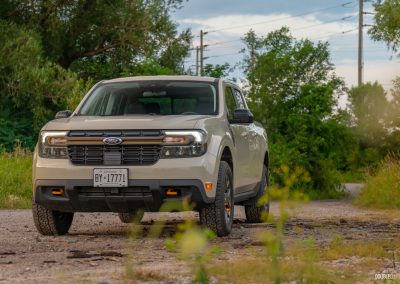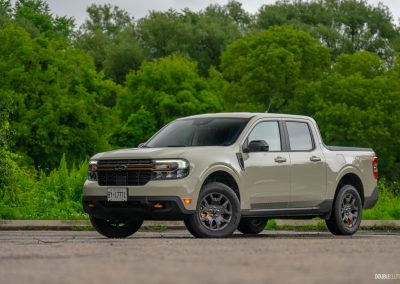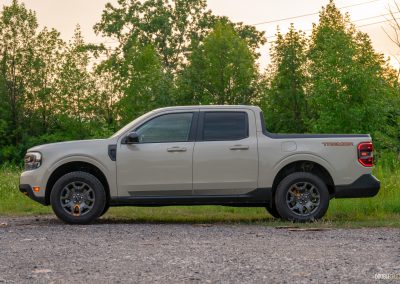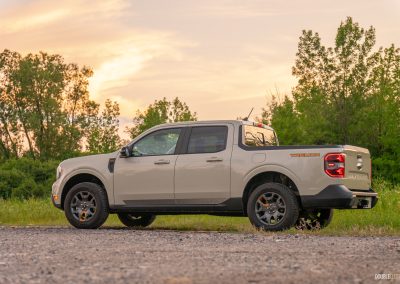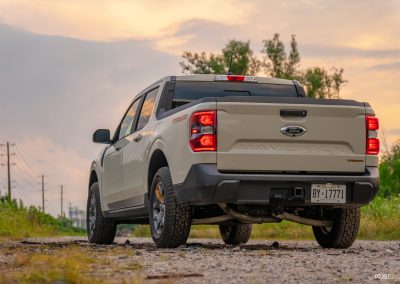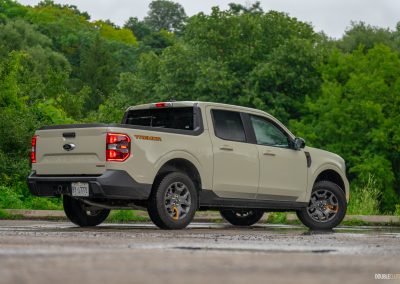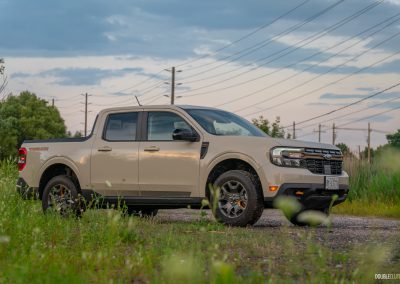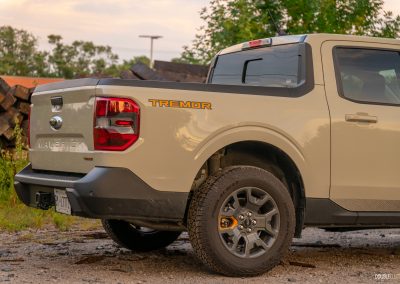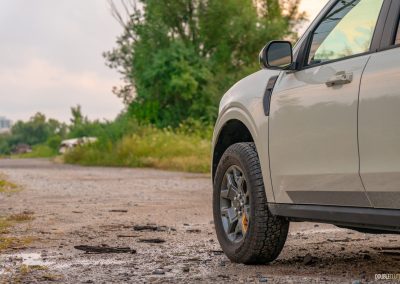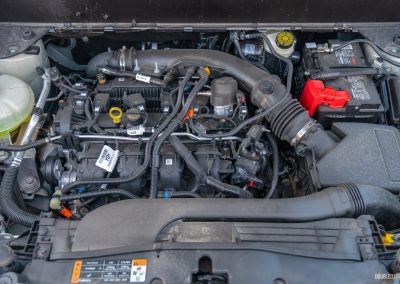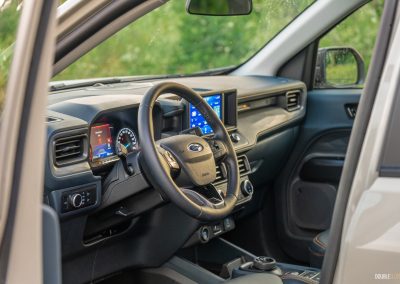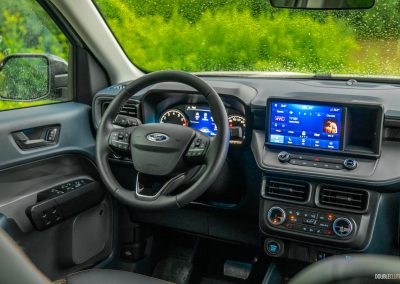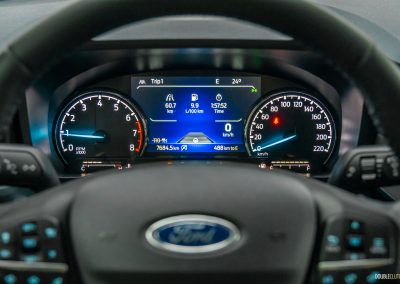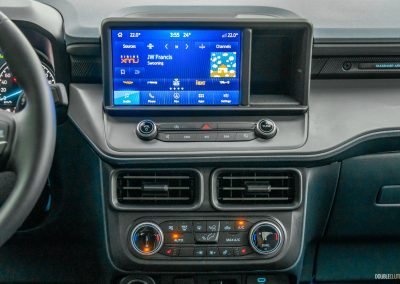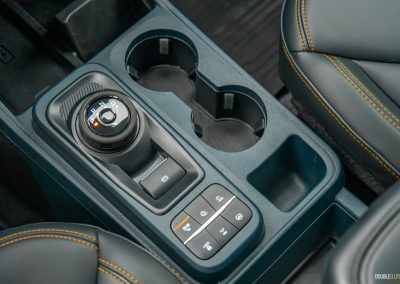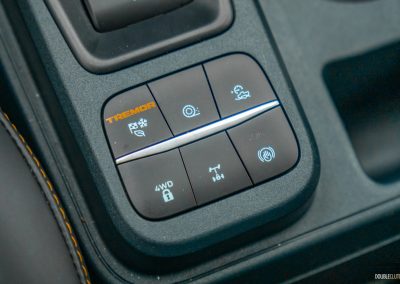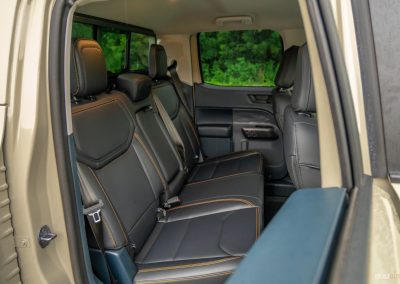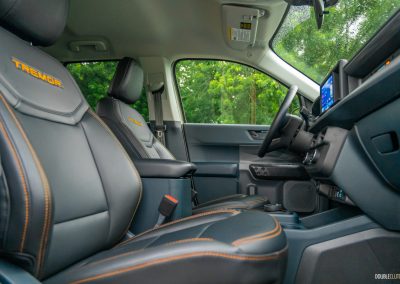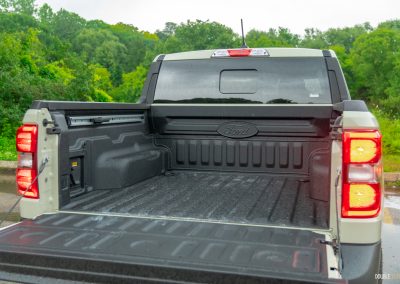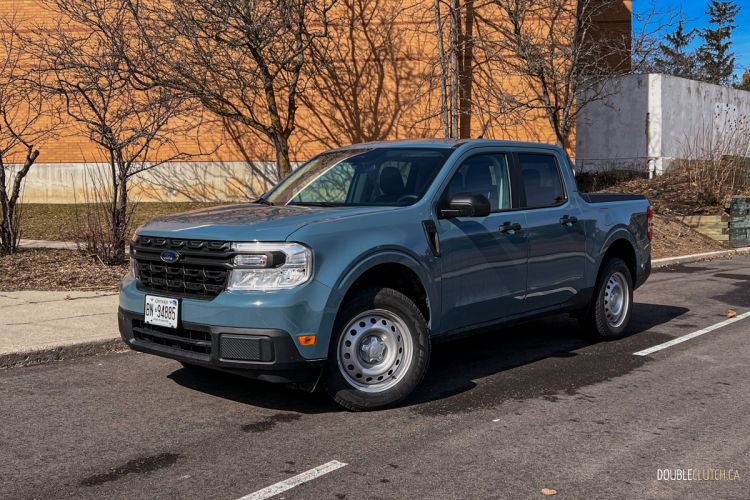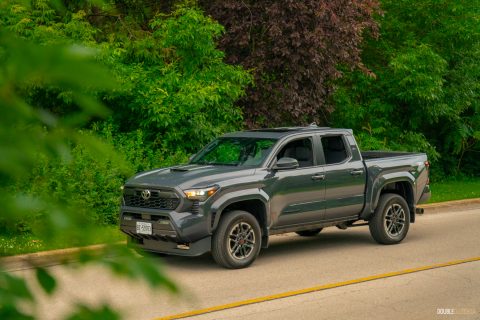This may be too inside-baseball for some, but when we dole out press car assignments, we have a section for “dibs” where we can preemptively claim a vehicle. The very first on which I called dibs was a Ford Maverick, but through a series of scheduling conflicts, I never got one — until this 2024 Ford Maverick Lariat Tremor popped up. I wanted one because when the Maverick first launched, I thought it was the most important new vehicle in years. I’m happy to report that, after having finally driven it, I haven’t changed my mind.
When SUVs first started popping up, the question of whether it was “a real truck” came up fairly often; the existence of the real truck implies the existence of a fake truck. An Explorer was (at first) a real truck because it was built by use of a ladder frame to which its body was then bolted, whereas a Jeep Cherokee was a fake truck because it used a unibody skeleton like a car — we just call these crossovers now. The Honda Ridgeline was the first fake pickup truck to be built on a unibody, but it struggled to catch on because, well, it was fake.

This isn’t a knock against it — or the original Cherokee, for that matter. In fact, this is the Ridgeline’s greatest strength. Body-on-frame construction like a real truck has its advantages, but those advantages only really come into play under extreme off-roading and serious towing. While a truck frame is stronger overall, a unibody is more rigid, meaning it rides and handles vastly better, and is considerably lighter. The Ridgeline is all the pickup that 95 per cent of buyers actually need, but it didn’t change the fact that it was a fake pickup from a company that never built a truck.
The Maverick, on the other hand, comes from the number-one purveyor of pickups on the planet. The Maverick is just as “fake” as the Honda Ridgeline — arguably more so — but Ford makes the real deal, lending it a huge amount of legitimacy in the hearts and minds of the fickle public. Just like you could buy smartphones with internet connectivity, a decent camera, music playback, and a slick UI before the iPhone, Apple’s name on it made it real and their execution made it a staple.

The other thing making the Maverick so important was the fact that it came standard with hybrid powertrain, and it was cheap. You could get these for under $30,000 when they first came around, and even well-equipped models represented an unbelievable value. It was the antithesis of the modern luxury leviathan that trucks have come to be: it was small, front-drive, hybridized, unibodied, and not a hundred grand.
This Maverick is a little different. It’s a loaded Lariat with the Tremor package, trading the hybrid powertrain for a 2.0-litre turbo-four rated at 270 horsepower, mated to an eight-speed automatic transmission and all-wheel-drive. And being the top-trim Lariat, it gets a number of niceties like an eight-way power-adjustable driver’s seat, Bang & Olufsen audio, navigation, adaptive cruise control with lane centering, and dual-zone climate control.
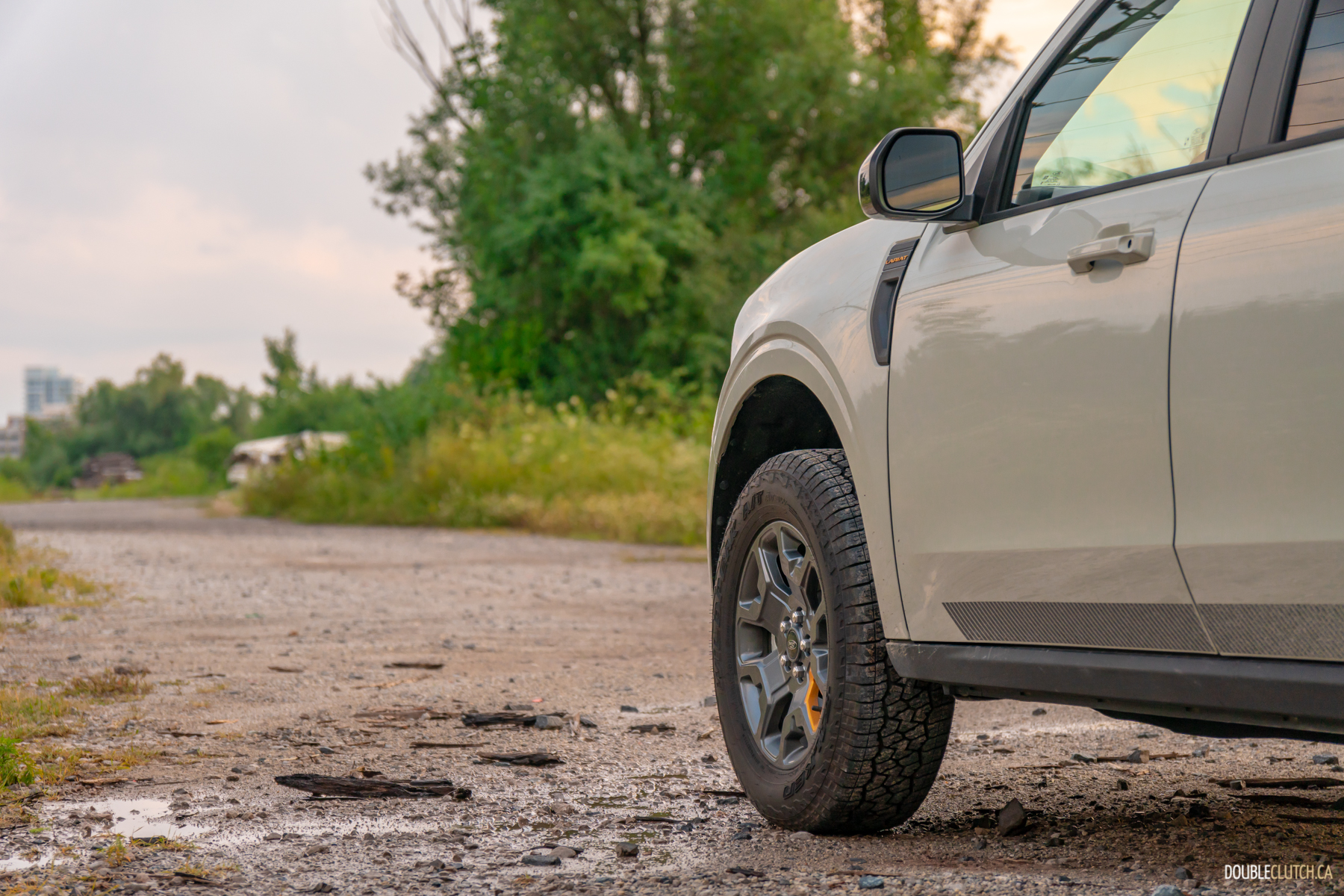
On top of that, the optional Tremor package adds a lot for $3,900, such as 17-inch wheels shod with Falken Wildpeak all-terrain tires, a revised front bumper that enables a better approach angle, skid plates, firmer and taller suspenders, a locking rear differential, terrain modes, hill descent control, bespoke leather seating, and upgraded engine and transmission cooling.
It all adds up to make the little faux truck look and feel fairly substantial. The Maverick is well-made, quick, rides great, handles well, and its off-road goodies give it some pretty decent trail chops, too. Sure, it can’t tow 10,000 pounds or crawl up the side of a mountain, but it’ll tow 2,000 pounds comfortably and handle itself through just about any ATV or hydro trail I’ve seen in Southern Ontario. And unlike its real truck siblings, it’ll actually fit through those trails.

The Maverick even lacks some of the compromises of it’s midsize siblings, like the Ranger. Despite being smaller, it has a larger back seat that’s actually pretty comfortable. It has a smaller bed in exchange for that, but the Ranger’s (and even an F-150 SuperCrew’s) bed is already too small for something like a sofa without resorting to tie straps. Who cares if a few inches are taken from the bed and given to the cab? The Maverick is quiet, drives like a car, and sips gas like a car, averaging 9.9 L/100 km in my week with it.
The whole appeal of the 2024 Ford Maverick Lariat Tremor is that despite not actually being a truck, it’s all the truck that the overwhelming majority of people actually need, and it doesn’t carry the drawbacks of a real truck, either. Our decked-out tester rings in at $47,800 as-tested, but that can go way down if you’re willing to give up some frills. Either way, you get something that looks like a truck and talks like a truck, but isn’t cumbersome, costly, or thirsty like a real truck. A lot of the best SUVs haven’t been real trucks for years now, so why can’t a pickup do the same?

